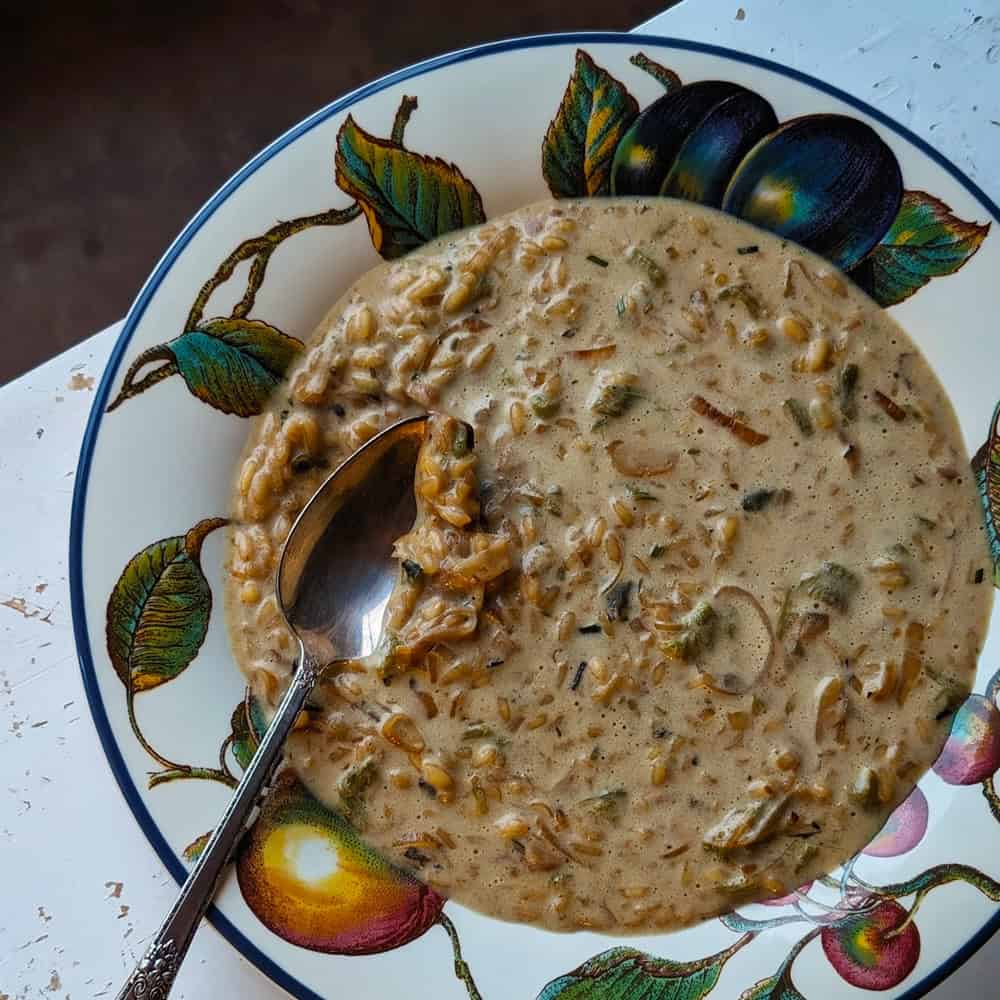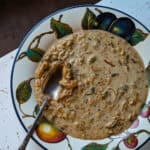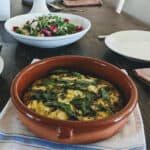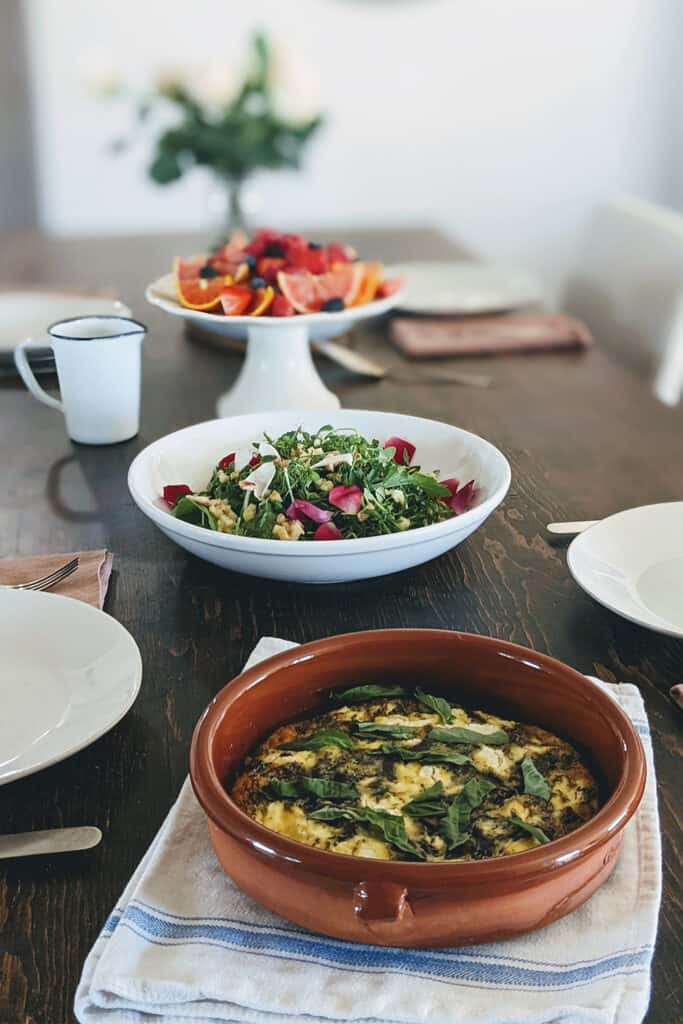There are few things I love to cook more than risotto. Honestly, I can’t think of anything else except fresh pasta or a summer pie. And I guess what I mean is, that no part of making this Italian rice feels like a chore. Rather more of a gift. When else in the course of a day do you have the chance to stand still and watch simmering rice bloom in warm, buttery broth? Usually, once during the cooking process, I can’t help but think that a pot of risotto cooking on the stove resembles a hungry baby. It’s a hilarious and delightful thought. And I continue on, feeding it one ladle of broth at a time until at last the rice is tender and ready to be finished with parmesan and fresh whipped cream.
You’ll notice this recipe calls for fire-roasted green chiles. There’s a lot of room for interpretation and personal preference here. I rummaged around in my freezer and used a mix of fire-roasted Sandia and poblano chiles. First and foremost, you can use the chiles that you have. If you don’t have a stash in the freezer, don’t despair! You can use frozen green chiles available in most grocery stores in the state (just defrost and drain) or you can buy Anaheim or Poblano chiles and blacken them over a grill or in the oven and then peel the skin off.
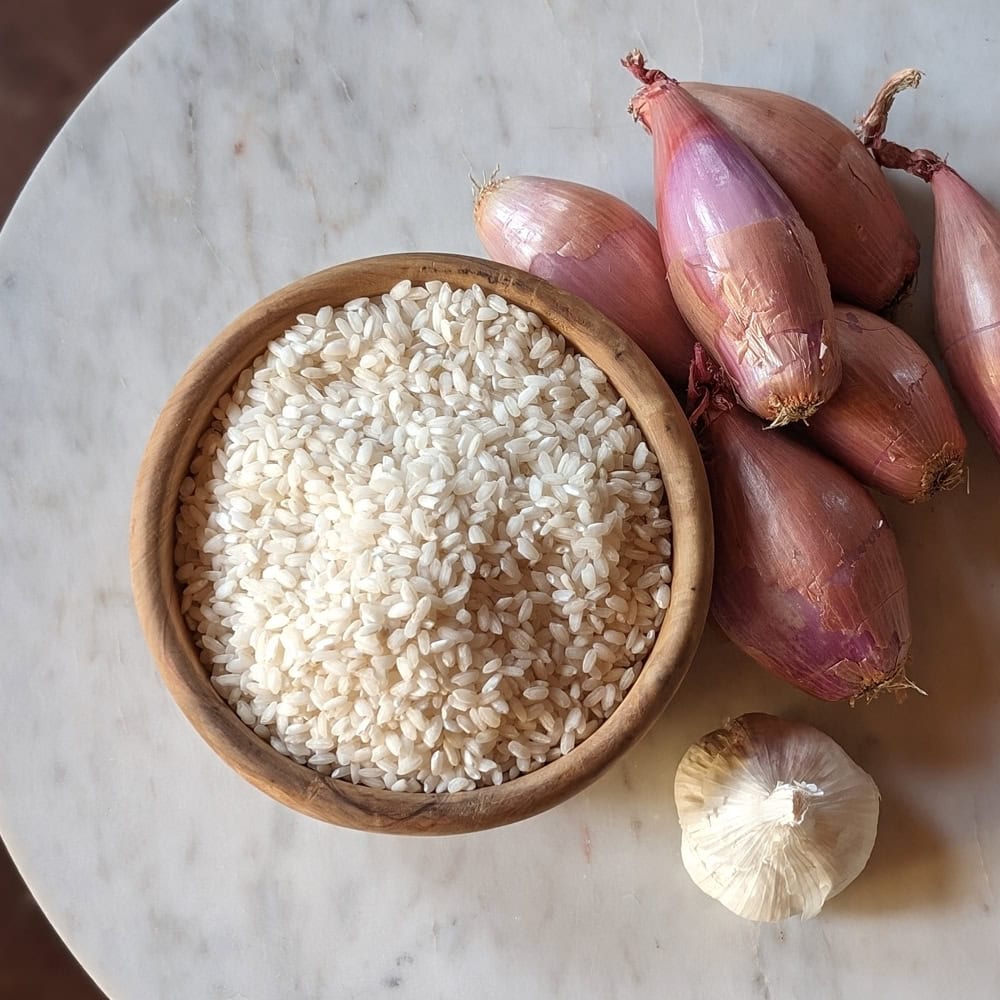
This is a recipe where each detail matters. I like to gather all of my ingredients ahead of time so the cooking flow feels pleasant and easy. Oh, the joy of mise en place never disappoints. In the recipe, you’ll notice that we toast the rice for around four minutes in the pot before adding liquid. This step creates a barrier around each grain of rice, allowing it to absorb liquid slowly and retain its texture without becoming sticky.
This risotto can be served on its own (preferably on a warm flat plate), or paired with roasted wild mushrooms, roasted vegetables, and a variety of fish or meat. It can be served as a side but is perfectly delightful as the entire dinner.
PrintFire-roasted green chile risotto
Discover the joy of making the perfect risotto with fire-roasted green chiles. This risotto can be served on its own, or paired with roasted wild mushrooms, roasted vegetables, and a variety of fish or meat. It can be served as a side dish but is perfectly delightful for the entire dinner.
- Prep Time: 45 mins
- Cook Time: 45 mins
- Total Time: 1.5 hours
- Yield: 6 servings
- Category: dinner
- Cuisine: italian
Ingredients
- 8 T. butter, divided
- 6 c. vegetable or chicken broth
- 6 large shallots, sliced
- 4 cloves garlic, finely chopped
- 2 T. fresh rosemary leaves, finely chopped
- 1/2 c. fire-roasted green chiles, peeled, seeded and chopped
- 2 c. arborio or carnaroli rice
- 1 c. dry white wine
- 1 1/2 c. freshly grated parmesan cheese
- 1 c. heavy cream, whipped to stiff peaks
- Salt and pepper, to taste
Instructions
Making the broth
In a large saucepan over medium heat, add 4 Tablespoons of butter. Keep a close eye on it as it melts, then foams then starts to turn a golden brown. Once the butter has turned a deep golden brown (but not burned), very carefully whisk in the broth. Be careful because it will steam. Season lightly with salt and pepper. Bring this mixture to a simmer, then turn the heat to low while you prepare the risotto.
Caramelize
In a large and wide, heavy-bottomed pot over medium heat add the remaining 4 Tablespoons of butter. Once it melts, add the shallots. We are going to let the shallots caramelize, so this will take some time. Let them cook over low heat, stirring frequently with a wooden spoon until they are golden brown. This will take 30-45 minutes. If it seems they are cooking unevenly or you see some dark spots, add a splash of the warm broth to scrape the bottom of the pan and continue cooking the onions until they have fully caramelized.

Time to toast
Now add the garlic, rosemary, and green chiles. Cook for another couple of minutes. Now add the rice and cook for around five minutes stirring frequently. This is us toasting the rice!
Now carefully add the white wine, scraping any caramelly bits from the bottom of the pot, and let cook until most of the liquid has evaporated.
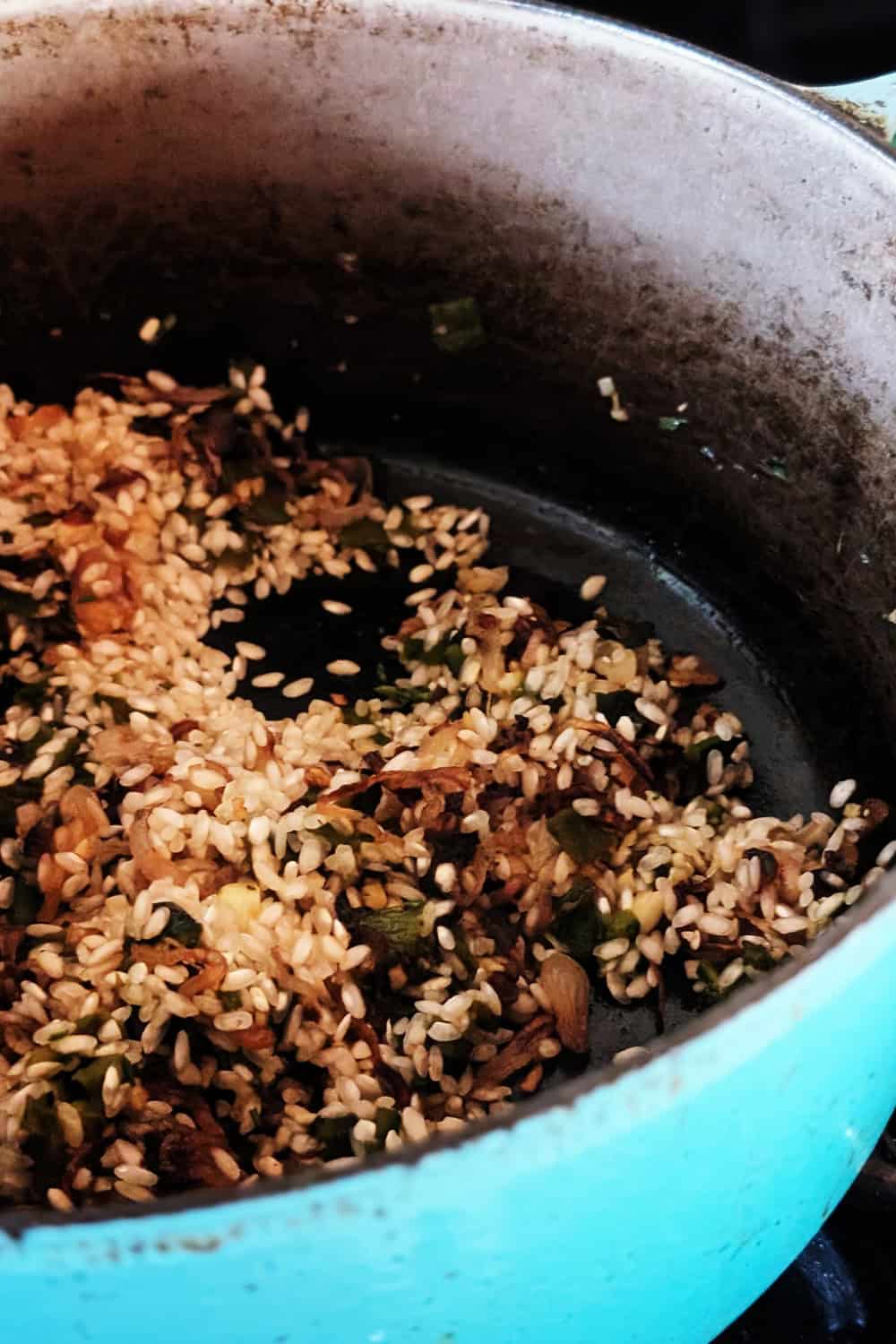
Adding the broth
At this point, we are going to slowly feed a ladle full of the warm broth to the rice and stir frequently. Over time, the rice will absorb the broth and you can add another ladle and another, continuing to stir and adding broth until the rice has almost fully absorbed all the broth and is “al dente” to the taste, meaning that it is cooked but still retains a bite and definitely not mushy. If you use all the broth and still feel like the rice needs more liquid, feel free to use a little water to finish cooking.
Finishing touch
Add the parmesan cheese, and stir for a minute. Now, right before serving, add the freshly whipped cream. Fold the cream into the risotto with a large heat-proof spatula, letting as much air transfer to the risotto. Give it a taste and add salt and/or pepper as needed.
To serve, spoon the risotto in bowls or large flat plates. If you serve on a plate, spoon the risotto in the center and let it spread towards the edges.
